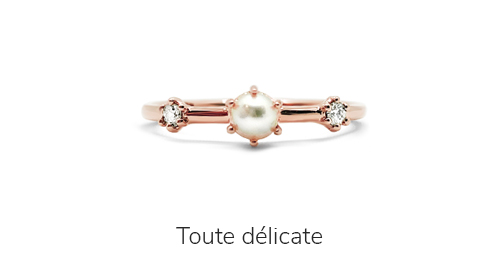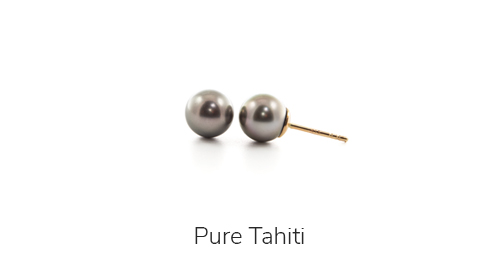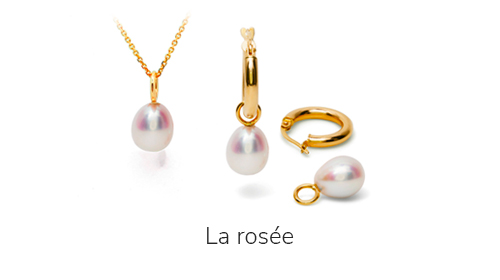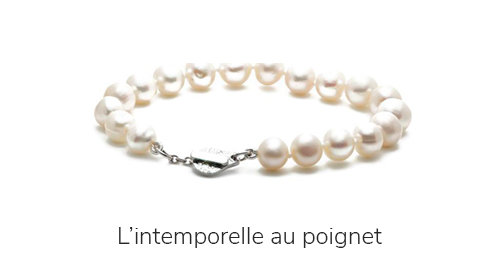
What are the different types of pearls
Formerly called margarita or union, the pearl is a calcareous concretion made by certain bivalve molluscs in reaction to an irritant that seeps inside its shell. They surround this foreign body with a layer of nacre (calcium carbonate), thus creating a pearl. Its discovery is not new. Archaeological excavations made it possible to find it inside tombs 32,000 years old. A symbol of purity, wealth and prestige, from ancient Rome to Victorian England, the pearl has always been the object of fascination and desire. At the beginning of the 20th century, the Japanese Kokichi Mikimoto opened the first pearl farm and developed pearl culture, a technique which has since spread to all the archipelagos of the Pacific Ocean.
The color of the pearl
Each pearl is unique although they can sometimes be difficult to differentiate from one another. Its size, its shape, its symmetry, its color, its transparency, its luster, its texture, the clarity of its surface and its luminosity in depth (the orient) are all characteristics which define it and which increase or decrease its value . The color of the pearl , for example, depends on the type of mollusc in which it is formed, its nutrition, the chemical component of its minerals and the water in which it bathes. There are a thousand and one other characteristics of the pearl that we could dwell on but let's focus on the types of pearls as the title suggests.
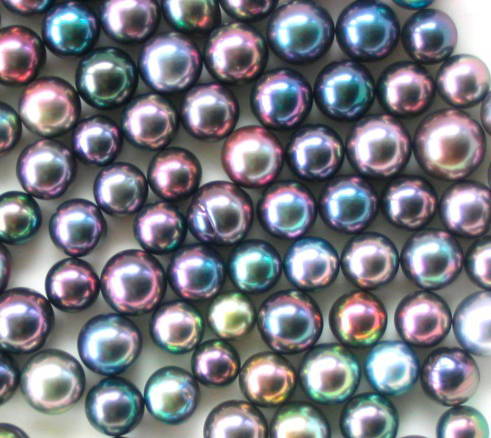
Types of pearls
The most well-known types of pearls are Akoya pearls, freshwater cultured pearls , Tahitian pearls and Philippine cultured pearls , also called South Sea pearls. It is on these types of pearls that we will focus our research but there are also Mabé, Keshi, conch pearls, Melo pearls and abalone pearls. The latter, found in their natural state, are considered the rarest and most beautiful, displaying a very high shine and intense luster. The International Confederation of Jewelery, Diamond Goldsmithing, Pearls and Stones (CIJBO) lists 69 species and subspecies of saltwater and freshwater molluscs capable of producing pearls. The difference between so-called natural fine pearls and cultured pearls born from a graft caused by human intervention is well explained in this text . You should be wary of imitations made of glass and plastic, which are visually very successful but whose surface of the pearl is smooth and without roughness.

Pearl farm, Jiujiang County, China
Akoya pearls
From the Japanese akoya-gai meaning marine pearl oyster, its cultivation allowed Kokichi Mikimoto to deserve the title of “father of the pearl”. Each oyster can contain up to five mother-of-pearl nuclei which take 8 months to 2 years to develop. These are small pearls with very round shapes and white, cream and yellow colors. These cultured pearls from Japan have a diameter varying between 2 and 8 mm. The pearls must then be sorted after harvest since they are not all of commercial quality. Akoya production in Japan has now moved to the less polluted waters of China, Vietnam and Tahiti.
Freshwater cultured pearls
The strands of beautiful white pearls used to make necklaces or bracelets usually come from freshwater cultured pearls. Through tissue nucleation, a valuable freshwater mollusk can produce up to 50 pearls of varying shapes and colors up to 14 mm in diameter. Entirely formed from a layer of mother-of-pearl, these clear and luminous pearls are formed within 8 months to 5 years. China produces more than 1,500 tonnes per year, including the highly prized pink freshwater pearl, making it the world's largest producer.

Surgical implantation of an irritant into an oyster, Halong, Vietnam
Tahitian pearls
Only its name, rare pearls, makes you dream. From a beautiful island in French Polynesia, the Tahitian black pearl variety is undoubtedly the most coveted of them all. But contrary to popular belief, black pearls and gray Tahitian pearls are not the only ones to be harvested on this paradise island. We also find white, blue, eggplant and a rainbow mix. They are distinguished by the marked contrast between the surface color and the luminosity in depth (east), shades of blue, blue-green, violet and green-pink. This green-pink orient called “peacock” is also the rarest and most expensive. The growth of Tahitian pearls in sea water lasts 4 to 5 years. Their sizes can reach up to 18 mm in diameter. Each oyster can only contain one nucleus at a time but it can be cultured repeatedly.
Philippine cultured pearls
Philippine cultured pearls, also known as South Sea pearls, are grown in the Philippines, Australia and Indonesia. Australia uses a variety of silver-lipped oysters that are known to produce white pearls with a silver tint while Indonesia and its gold-lipped oysters grow more golden white sea pearls with a palette of a more or less dark champagne yellow. Cultured pearls from the Philippines are distinguished by the intensity of their golden hue, their diameter of up to 20 mm and their shiny, satin luster. A quality strand of pearls can take several years to obtain. The South Sea pearl oyster can only receive one implant at a time and can take 2 to 6 years to create its pearl.
The craze for the Tahitian pearl
The black Tahitian cultured pearl is attracting the spotlight of the jewelry world these days. Is this due to its deep Orient and exotic origins? The Flamme en rose jewelry store is following this trend closely and is currently working to offer you a new range of products with this pearl color . For several years now, we have been offering jewelry made with freshwater cultured pearls . Take the time to discover our L’intemporelle collection. Follow us to find out more.
Get an online consultation with one of our jewelers today.

